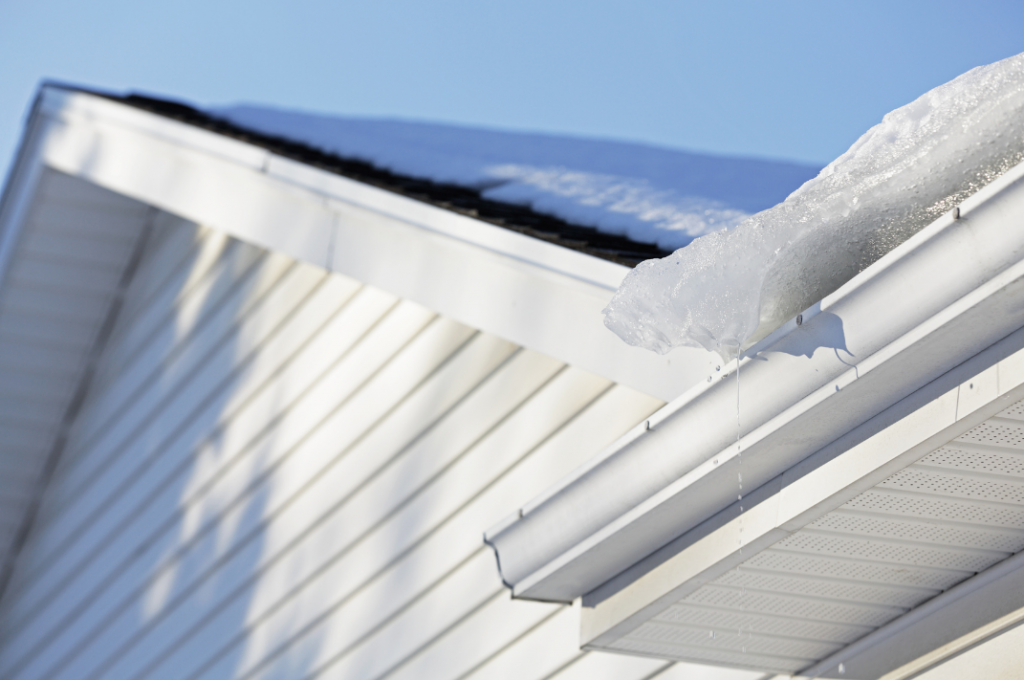
Icicles are beautiful as they hang from the roof of your home. Depending on the lighting, they can really add to the ambiance and aesthetic appeal. Unfortunately, they’re not all they’re cracked up to be. Yes, they’re fun to look at, but they will cause a host of serious issues with your roof if you’re not careful.
Icicles Are a Sign of Ice Dams
Not all icicles mean you are dealing with ice dams and not all ice dams are connected to icicles, but it’s still something you should watch out for. For both ice dams and icicles to form, a few things need to happen. There needs to be snow on the roof, heat inside the attic to melt the snow, and cold enough weather to refreeze that melted snow once it hits the eaves of your home where there’s no insulation. Sometimes that water will freeze into an ice dam, and other times it will begin to drip off the roof to form an icicle.
Ice Dams Can Cause Serious Damage
Your home becomes susceptible to severe damage when you have ice dams on the roof. The weight of the ice could begin to pull the gutters away from the roof. This opens up gaps where moisture can seep down into the structure of your home. That moisture will cause paint to peel, insulation to get wet and eventually moldy, and dampness to permeate your home.
You Can Prevent Damage From Ice
Regardless of how much you do, you’re going to run into issues with your home. The good news is you can take some preventative measures to avoid ice damage to your roof and home:
- Have the roof installed correctly to begin with. Part of our asphalt shingle roofing system includes an underlayment with a leak barrier that prevents water buildup and ice dams.
- Take inventory of the insulation in your attic. When you add insulation to the floor of your attic, the warm air stays inside your home, rather than making its way into the attic to melt the snow on top.
Learn More About Your Roof
Keeping your roof in good condition is essential to the quality of your home. Contact Badger Contracting by calling 410-417-6972 or sending us an email to learn more about your roof and what can be done to protect it.
